"Ross Island is not a place for a settlement; it is a place for an elaborately equipped scientific station..." A prescient statement by Apsley Cherry-Garrard, when you consider all the science that is being done at McMurdo Station almost 100 years later!
McMurdo may not be "elaborately equipped" but it has amazing people that can get great work done. Sherri Fabre is the carpenter that built special boxes for the trailer we pull behind the Tucker. She did beautiful work!
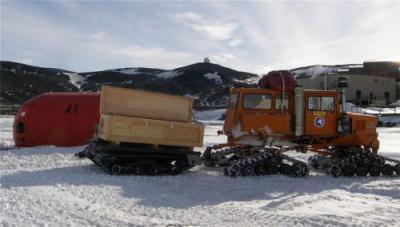
Sherri built specially made boxes that fit on our trailer
Today is the last day Marcus and I are at McMurdo, assuming the weather holds and our C-17 aircraft comes in tomorrow. Since Marcus is our VideoRay master, he is passing on as much of his knowledge as possible to everyone else.
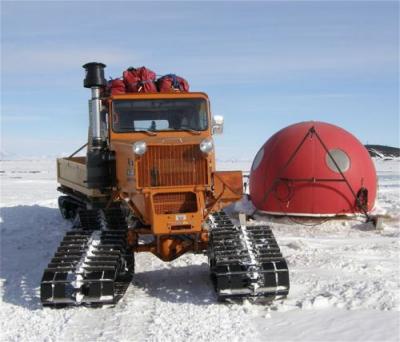
The Tucker and the Tomato
BLee and Rusty arrived on November 11th and immediately started their series of trainings. They had a good time at Happy Camp (also known as Snow Craft I) and Sea Ice training, which are the two most intensive trainings here. Now we are all going down to the sea ice right in front of the Station where the sewage outlet used to be, and where the treated liquid waste still enters the ocean. We will be diving VideoRay instead of the human divers (see yesterday’s post), but we are still carrying disinfectant to clean the VideoRay and its tether when they come out of the water.
The first step is to drill the transducer holes. This time Rusty helps Stacy and I get to photograph instead of drill. Rusty works with Stacy at Moss Landing Marine Lab’s and they are a solid drill team.
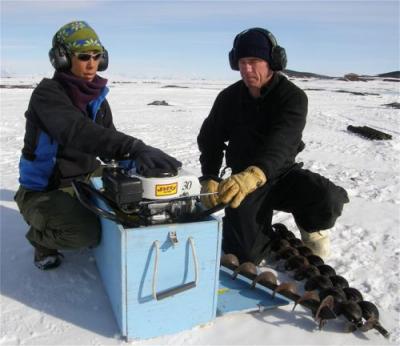
Stacy and Rusty preparing to drill the transducer holes
Then Bryan and BLee brought out the GPS to get a precise location of the holes for the navigation system. The white top on the yellow pole is what receives the signals from the satellites.
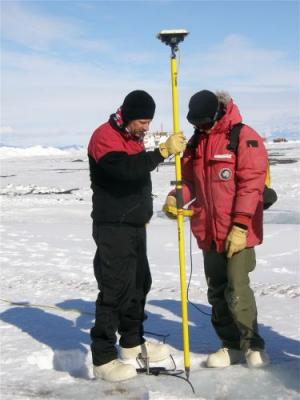
BLee and Bryan use GPS to precisely locate the holes
The GPS information is then given to the navigator. Nick is often our navigator, and today he gets some good help from BLee. Remember that BLee was the chief pilot of the Alvin for 11 years, so he knows a LOT about underwater navigation.
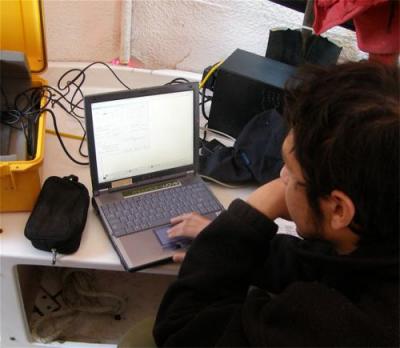
Nick is navigating VideoRay from the Tomato
Marcus starts at the VideoRay controls but then lets everyone try to fly VideoRay underwater. It is important that Rusty and BLee get used to flying VideoRay so they can help the rest of the team accomplish more science before the rest of the team leaves McMurdo in the middle of December.
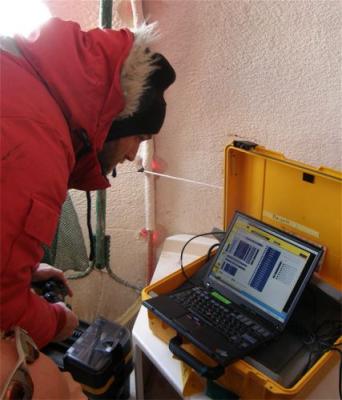
Marcus at the VideoRay controls
Nick is mapping the "Charmin pile” left over from when sewage was dumped here until 2003. The pile is a white color and looks kind of fluffy, hence its name. The pile is not Charmin toilet paper; it is composed primarily of a bacteria called Beggiatoa that has created a mat over the sewage. Nick is mapping this area for his capstone project for his bachelor’s degree at California State University - Monterey Bay.
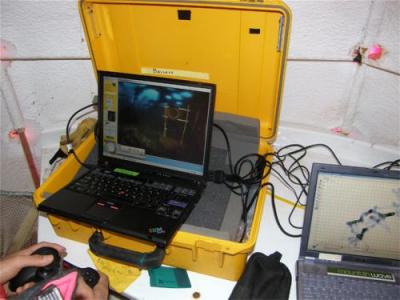
VideoRay image of the outlet pipe
Nick was able to map the perimeter and then they did a procedure called "mowing the lawn” where they went back and forth across the pile to get new measurements they can use to compare to the perimeter measurements and make a more accurate map.
They finished before dinner, and then Marcus and I had "bag drag” where we took our luggage to be weighed and tagged for the flight back to New Zealand. All we got to keep was our carry-on bag, so we sure hope our flight makes it in tomorrow!

